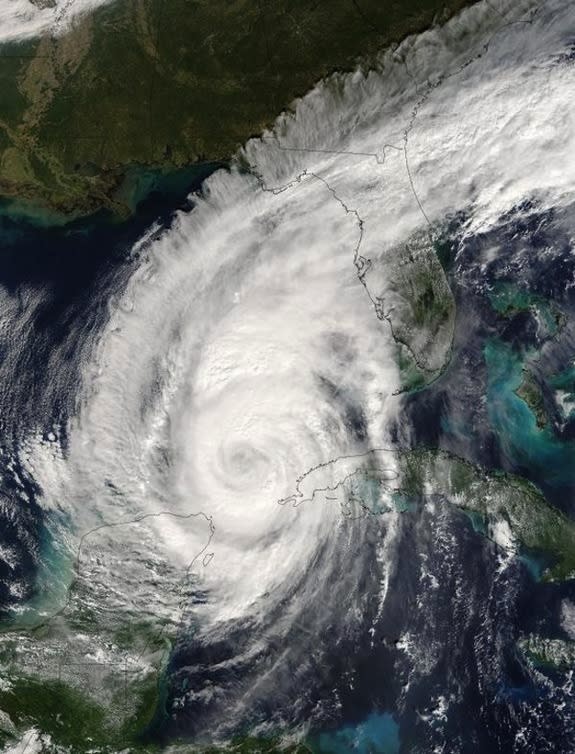Why Has It Been So Long Since a Major Hurricane Hit the US?
The United States hasn't been any stranger to hurricanes in the last eight years. Hurricane Sandy, for example, caused about $50 billion in damage and was responsible for more than 150 U.S. deaths last year, although the storm was technically an extra-tropical cyclone when it hit.
But surprisingly, not a single major hurricane, defined as a Category 3 storm or higher on the Saffir-Simpson scale —with minimum wind gusts of at least 111 mph (178 km/h) — has directly hit the United States in nearly eight years. That's twice as long as any major hurricane landfall "drought" since 1915, and by far the longest on record since data began being collected prior to 1900. As of today (Sept. 12), it's been 2,880 days since Hurricane Wilma, the last major hurricane to strike the United States, made landfall on Oct. 24, 2005.
The reasons behind this drought turn out to be a combination of atmospheric wind patterns, how close to the coast hurricanes form and luck.
Luck
Luck probably plays the biggest role in the lack of major hurricane hits, said Chris Landsea, the science and operations officer at the National Hurricane Center (NHC). As noted, it's not like the last eight years have been quiet. Seven hurricanes, for example, have made landfall in the United States, according to government records. A pair of these, hurricanes Gustav and Ike in September 2008, were Category 2 storms, and the latter nearly became a major hurricane, Landsea told LiveScience.
Throughout the Caribbean and Central America, there have been a total of nine major hurricane landfalls since 2005, said Brian McNoldy, a researcher at the University of Miami. (Cuba alone has experienced four major hurricane landfalls in the last eight years, McNoldy added.) [Hurricane Season 2013: Storm Coverage]
There are two major factors that help explain this, though, Landsea said. For one, most hurricanes haven't formed close to shore in the last few years. Formation near American soils — as happened in the cases of hurricanes Katrina, Wilma and Rita in 2005 — understandably increases the chance a hurricane will make landfall as a strong cyclone.
Second, weather patterns have steered many hurricanes away from the mainland. Over the past few years, for example, there has often been a dip in the jet stream over the East Coast, which has helped steer storms away from shore, Landsea said. "Most hurricanes that have approached have turned back," he said. "But that's something that's extremely variable, and not predictable."
As to exactly why hurricanes haven't formed near shore and have been steered away from land, Landsea couldn't say. "I can say the 'what' but not the 'why' — the science on this isn't completely clear," he said. "I'd say it's mostly luck." [Image Gallery: Hurricane Season 2013]
Experts agree
Other experts agreed that the drought was mostly a matter of chance and didn't reflect some deep underlying pattern. "One of the biggest factors is luck," McNoldy said.
"It's just a fluke, and good luck," said Jason Samenow, a meteorologist with the Washington Post's Capital Weather Gang blog. "We certainly haven't been in a quiet pattern."
Jeff Weber, a scientist with the University Corporation for Atmospheric Research in Boulder, Colo., went further, saying that the "period of record is too short to make any assumptions based on this statistic." While this is a long stretch "without a 'major hurricane' making landfall, there's not enough data to make this statistically significant," he added. "I am in the camp that this is a natural variation and that over time it will average back out."
"Our time will come again," as McNoldy, who lives in hurricane-prone South Florida, put it.
Email Douglas Main or follow him on Twitter or Google+. Follow us @livescience, Facebook or Google+. Original article on LiveScience.
Copyright 2013 LiveScience, a TechMediaNetwork company. All rights reserved. This material may not be published, broadcast, rewritten or redistributed.



